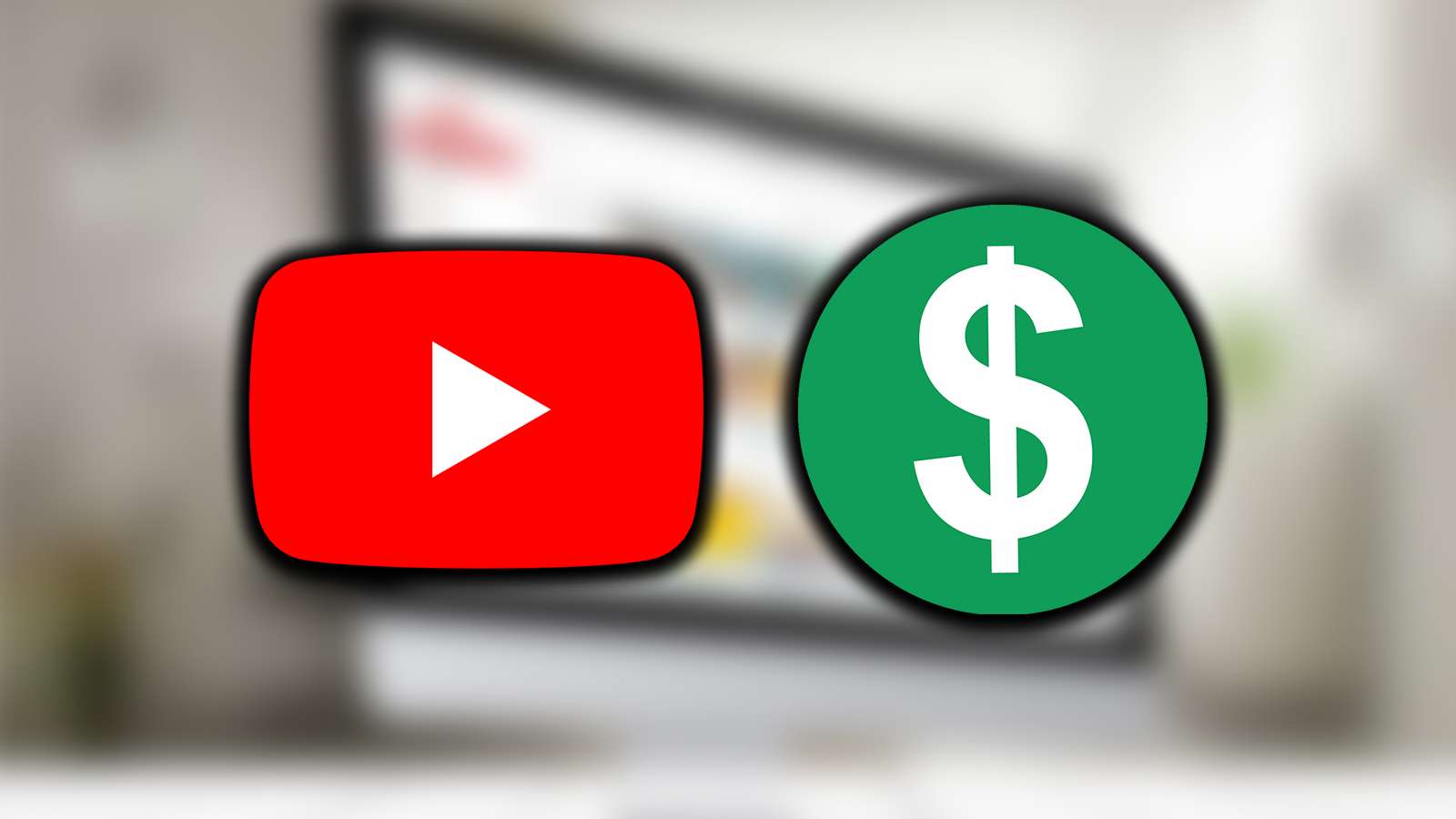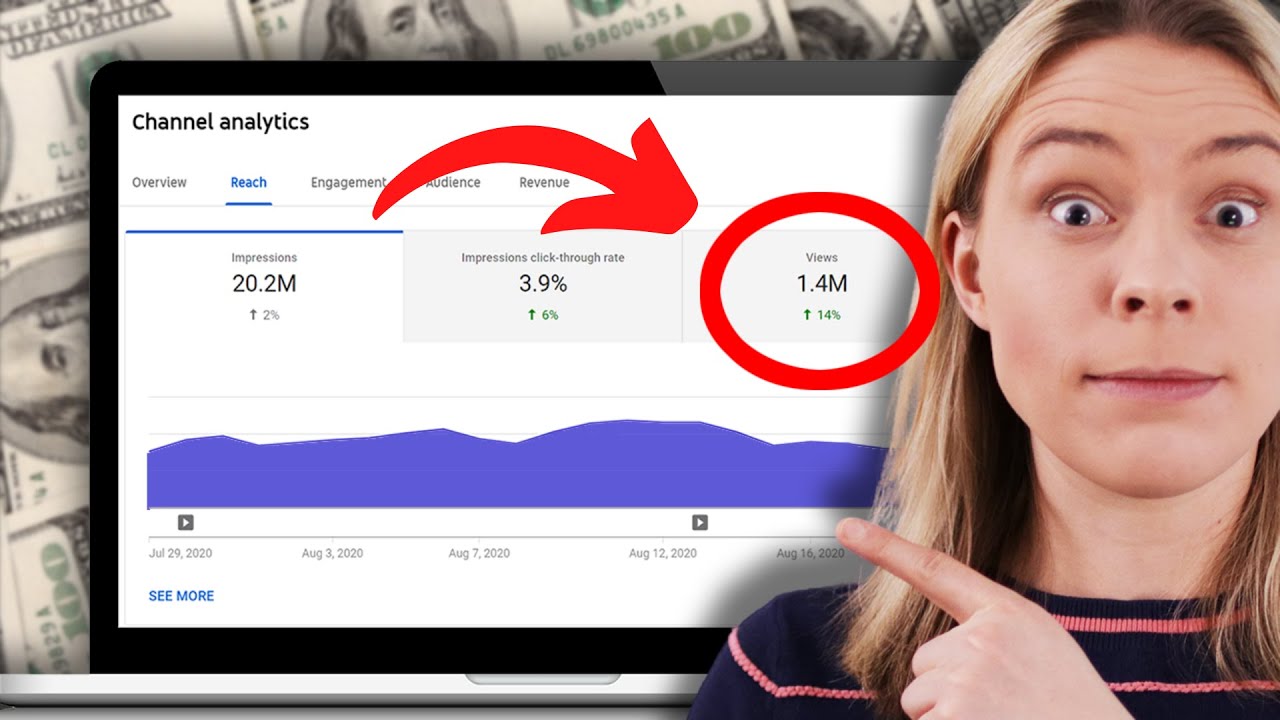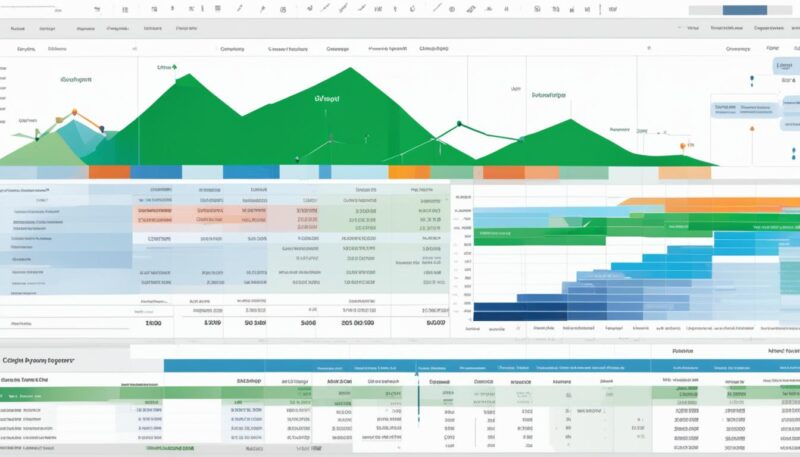Did you know that on YouTube, creators are paid based on ad views rather than video views? It’s a startling fact that highlights how YouTube monetization truly works. If you’ve ever wondered how much YouTube pays for 1 million views, it’s essential to understand the intricacies of YouTube earnings and the factors that contribute to a creator’s payout.
Key Takeaways:
- YouTube pays creators based on ad views rather than video views.
- To earn money through ads, creators must join the YouTube Partner Program and meet requirements such as having 1,000 subscribers and 4,000 valid public watch hours in the last 12 months.
- Factors such as watch-through rate, location, industry, available ad formats, and competition influence YouTube ad revenue and, subsequently, a creator’s earnings per view.
- The average earnings range for US YouTubers is approximately $0.01 to $0.03 per view, resulting in $10,000 to $30,000 for 1 million views.
- Although these numbers provide a general estimate, each creator’s circumstances may vary, emphasizing the importance of dedication, quality content, and understanding the platform to maximize YouTube monetization.
How YouTube Pays Creators
YouTube pays creators for ad views, providing an opportunity for content creators to monetize their channels. In order to earn money through YouTube, creators must join the YouTube Partner Program and meet specific requirements. These requirements include having at least 1,000 subscribers and accumulating a minimum of 4,000 valid public watch hours within the past 12 months.
Once creators are approved for the YouTube Partner Program, they can start earning revenue from ads displayed on their videos. The amount of ad revenue generated is determined by various factors, including the watch-through rate, location of viewers, industry, available ad formats, and competition.
Creators can select different modules within the YouTube Partner Program to determine their revenue share rates. Two popular modules are the Commerce Produce Module and the Watch Page Monetization Module. The Commerce Produce Module offers creators 70% of net revenues from ads displayed or streamed on public videos. On the other hand, the Watch Page Monetization Module provides a revenue share rate of 55% for net revenues generated from ads displayed or streamed on public videos.
Here is a breakdown of the revenue share rates for the different modules:
| Module | Revenue Share Rate |
|---|---|
| Commerce Produce Module | 70% |
| Watch Page Monetization Module | 55% |
In summary, YouTube pays creators through the YouTube Partner Program, which allows them to earn money from ad views. Creators must meet specific requirements and can choose different modules to determine their revenue share rates. By understanding how YouTube pays creators and maximizing opportunities for ad revenue, content creators can monetize their channels and turn their passion into a profitable venture.
Factors Affecting YouTube Revenue per View

Several factors can influence the revenue per view on YouTube. These factors include the watch-through rate, location of viewers, industry, available ad formats, and competition.
A higher watch-through rate, where viewers watch more of the ad, can lead to increased revenue. This metric indicates viewer engagement and shows advertisers that their ads are being watched and potentially influencing the audience.
The location of viewers also plays a significant role in YouTube ad revenue. YouTube’s cost per thousand impressions (CPM) varies by region. Some regions may have higher CPM rates, while others have lower rates. Advertisers may target specific regions based on their advertising budgets and the value they place on reaching viewers in those areas.
Different industries may offer varying CPM rates on YouTube. Some industries, such as finance or technology, tend to have higher CPMs due to increased competition among advertisers who are targeting viewers interested in these topics. On the other hand, industries with less competition may have lower CPM rates.
The availability of different ad formats can also impact ad views and revenue. YouTube offers various ad formats, including skippable and non-skippable ads, bumper ads, overlay ads, and sponsored cards. The level of engagement and viewer preference for certain formats can influence ad viewability and the resulting revenue.
Moreover, if advertisers are competing for ad space, the bidding process can drive up CPM rates. Advertisers may bid higher amounts to secure ad placements on top-performing videos or channels, increasing the revenue potential for creators.
The Impact of YouTube Revenue Factors:
Higher watch-through rates, viewers from high CPM regions, industries with higher CPM rates, and increased competition among advertisers can all contribute to higher YouTube ad revenue. Conversely, lower watch-through rates, viewers from low CPM regions, industries with lower CPM rates, and limited ad competition may result in lower revenue per view.
It’s essential for creators to understand these factors and strategize accordingly to maximize their YouTube revenue. By creating engaging content, targeting viewers in high CPM regions and industries, and optimizing ad formats, creators can increase their earnings potential.
Next, let’s take a closer look at the different modules available for revenue sharing and how they impact YouTube monetization.
Conclusion

When it comes to YouTube earnings and monetization, there are several factors that creators should consider. Earnings from YouTube ad revenue can vary depending on factors such as watch-through rate, location, industry, available ad formats, and competition.
While there are no guarantees on the exact earnings for 1 million views, the average range for US YouTubers is approximately $0.01 to $0.03 per view. This translates to $10,000 to $30,000 for 1 million views. However, it’s important to note that these numbers are generalizations and can fluctuate based on the specific circumstances of each creator.
It’s also worth mentioning that YouTube monetization is not the only way to earn money on the platform. Creators can also explore opportunities such as endorsements and partnerships to supplement their earnings. However, no matter the avenue chosen, success on YouTube requires dedication, consistency, high-quality content, and a deep understanding of the platform and its audience.
FAQ
How much does YouTube pay for 1 million views?
The earnings for 1 million views on YouTube can vary, but the average range for US YouTubers is approximately
FAQ
How much does YouTube pay for 1 million views?
The earnings for 1 million views on YouTube can vary, but the average range for US YouTubers is approximately $0.01 to $0.03 per view. This means that creators can earn $10,000 to $30,000 for 1 million views.
How does YouTube pay creators?
YouTube pays creators based on ad views rather than video views. To be eligible for ad revenue, creators must join the YouTube Partner Program and meet certain requirements, including having 1,000 subscribers and 4,000 valid public watch hours in the last 12 months.
What factors affect YouTube revenue per view?
Several factors can affect the revenue per view on YouTube, including the watch-through rate, location of viewers, industry, available ad formats, and competition. These factors combined contribute to the earnings per view for creators.
How does the YouTube Partner Program work?
The YouTube Partner Program allows creators to earn money through ad revenue. Creators can select different modules for revenue sharing, such as the Commerce Produce Module and the Watch Page Monetization Module. The revenue share rates vary depending on the module, with the Commerce Produce Module offering 70% of net revenues and the Watch Page Monetization Module offering 55% of net revenues from ads displayed or streamed on public videos.
Can creators earn money on YouTube through other means?
Yes, creators can also earn money on YouTube through endorsements and partnerships. These additional income streams can supplement the earnings from YouTube monetization.
.01 to
FAQ
How much does YouTube pay for 1 million views?
The earnings for 1 million views on YouTube can vary, but the average range for US YouTubers is approximately $0.01 to $0.03 per view. This means that creators can earn $10,000 to $30,000 for 1 million views.
How does YouTube pay creators?
YouTube pays creators based on ad views rather than video views. To be eligible for ad revenue, creators must join the YouTube Partner Program and meet certain requirements, including having 1,000 subscribers and 4,000 valid public watch hours in the last 12 months.
What factors affect YouTube revenue per view?
Several factors can affect the revenue per view on YouTube, including the watch-through rate, location of viewers, industry, available ad formats, and competition. These factors combined contribute to the earnings per view for creators.
How does the YouTube Partner Program work?
The YouTube Partner Program allows creators to earn money through ad revenue. Creators can select different modules for revenue sharing, such as the Commerce Produce Module and the Watch Page Monetization Module. The revenue share rates vary depending on the module, with the Commerce Produce Module offering 70% of net revenues and the Watch Page Monetization Module offering 55% of net revenues from ads displayed or streamed on public videos.
Can creators earn money on YouTube through other means?
Yes, creators can also earn money on YouTube through endorsements and partnerships. These additional income streams can supplement the earnings from YouTube monetization.
.03 per view. This means that creators can earn ,000 to ,000 for 1 million views.
How does YouTube pay creators?
YouTube pays creators based on ad views rather than video views. To be eligible for ad revenue, creators must join the YouTube Partner Program and meet certain requirements, including having 1,000 subscribers and 4,000 valid public watch hours in the last 12 months.
What factors affect YouTube revenue per view?
Several factors can affect the revenue per view on YouTube, including the watch-through rate, location of viewers, industry, available ad formats, and competition. These factors combined contribute to the earnings per view for creators.
How does the YouTube Partner Program work?
The YouTube Partner Program allows creators to earn money through ad revenue. Creators can select different modules for revenue sharing, such as the Commerce Produce Module and the Watch Page Monetization Module. The revenue share rates vary depending on the module, with the Commerce Produce Module offering 70% of net revenues and the Watch Page Monetization Module offering 55% of net revenues from ads displayed or streamed on public videos.
Can creators earn money on YouTube through other means?
Yes, creators can also earn money on YouTube through endorsements and partnerships. These additional income streams can supplement the earnings from YouTube monetization.



